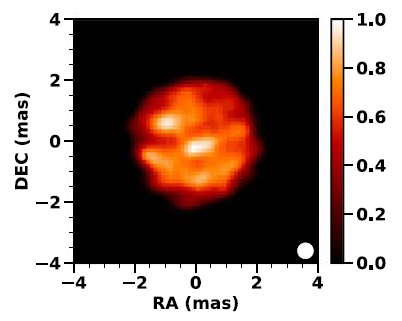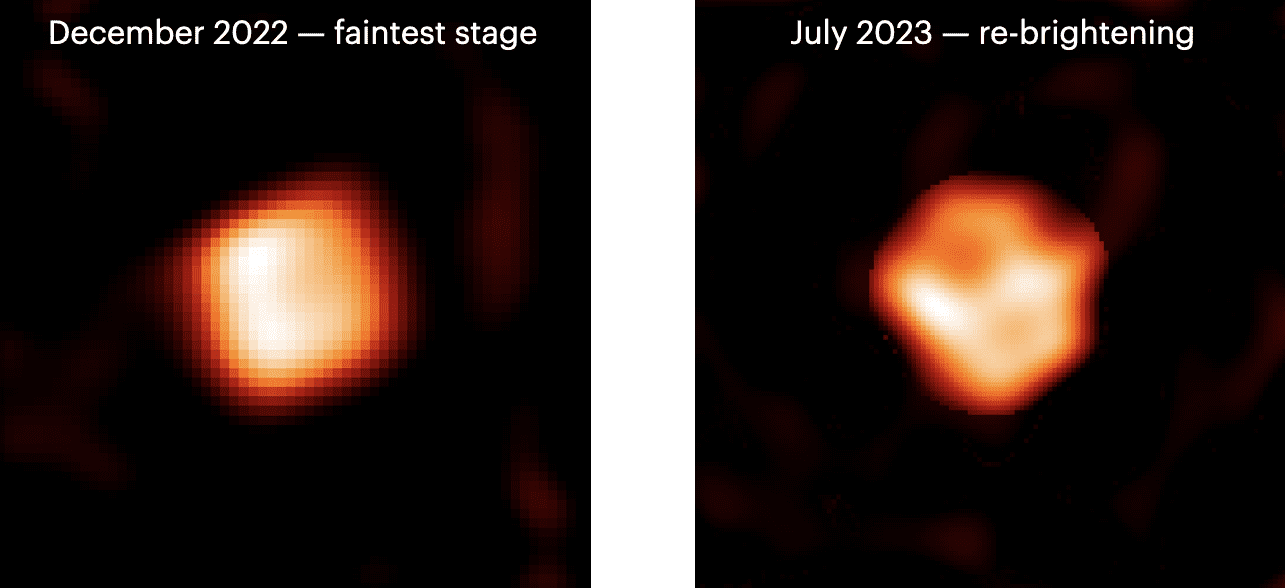Convection Cells on Red Supergiants
Red supergiants are stars nearing the end of their lifetime that are much larger than most stars in the universe. The CHARA image below (in angular units of milliarcseconds) shows the surface of the red supergiant AZ Cyg that was monitored with all 6 CHARA telescopes for 5 years. Both small and large features (which can be as large as a quarter of the stellar diameter) are revealed on the surface. The small features appear to vary on the timescale of months, while the large structures are stable for more than a year. The small spots are likely hot granules of rising gas while the dominating large spots are long-lived convection cells which represent the main means of heat and energy transport from the stellar core to the surface in cool stars like red supergiants.

Great Dimming of RW Cep
Mass loss plays a central role in the final evolutionary stages of massive stars, and with the Great Dimming of Betelgeuse in 2019 – 2020 there is a renewed interest in episodic mass loss events that occur in luminous supergiants. The cool hypergiant star RW Cep experienced a similar but longer duration Great Dimming event in 2022, and the star was imaged with the CHARA Array near photometric minimum and during the re-brightening phase by Anugu et al. (2023, 2024). The reconstructed H- and K-band images show an asymmetric intensity distribution and a distorted shape perhaps related to the limited knowledge about the faint limb-darkened edge. Contemporaneous near-IR spectroscopy demonstrated that the amount of fading increased towards shorter wavelengths, and this implicates dust formation from stellar ejecta as the explanation for the fading and unusual appearance. Anugu and colleagues are continuing to monitor the star with CHARA to explore how the surface appearance changes as the star brightens again.




